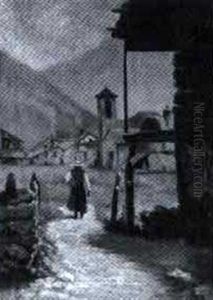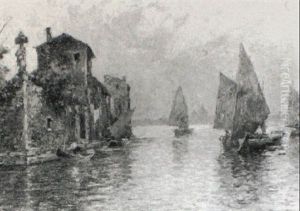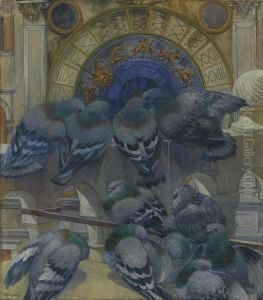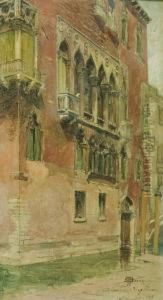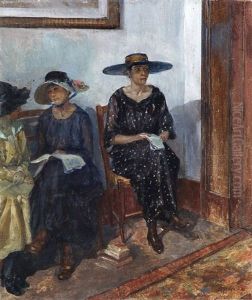Augusto Sezanne Paintings
Augusto Sezanne, born in 1860 in Udine, Italy, was a prominent figure in the Italian art scene during the late 19th and early 20th centuries. His career spanned various phases of artistic development, from Realism to Symbolism, and he is often remembered for his unique blend of these styles, which imbued his works with a distinctive character. Sezanne's contributions to art were not just limited to his paintings; he was also an accomplished graphic designer and illustrator, which added depth to his artistic portfolio.
Sezanne received his initial art education at the Accademia di Belle Arti di Venezia (Venice Academy of Fine Arts), where he honed his skills and developed a keen interest in the Symbolist movement. This movement, characterized by its emphasis on emotion, spirituality, and the imagination, significantly influenced Sezanne's work, leading him to adopt a more expressive and less literal approach to his subjects. His paintings often depicted dreamlike scenes, infused with a sense of mysticism and poetic beauty, which set him apart from his contemporaries.
Throughout his career, Sezanne participated in numerous exhibitions, both in Italy and abroad, gaining recognition and acclaim for his artistic prowess. His works were celebrated for their innovative use of color, light, and composition, which conveyed complex emotional and narrative depth. Sezanne was also deeply involved in the art community, contributing to the development of younger artists and participating in cultural debates of the time.
Despite his success, Augusto Sezanne remained dedicated to exploring new artistic avenues and techniques, demonstrating a lifelong commitment to growth and innovation. He left behind a rich legacy of paintings, drawings, and illustrations that continue to captivate and inspire audiences. Sezanne passed away in 1931, but his work remains an important part of Italy's artistic heritage, celebrated for its contribution to the transition from 19th-century artistic conventions to the more modern and expressive forms of the 20th century.
